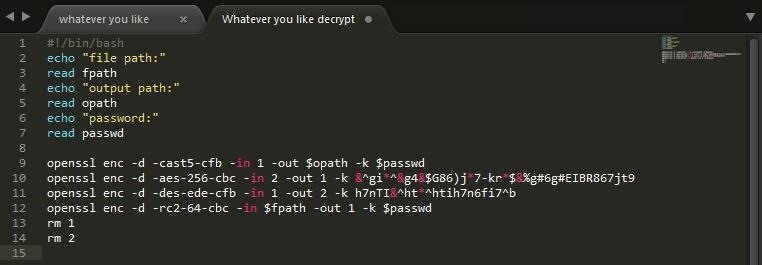

Keys need to be generated using a cryptographically secure random number generator.
Openssl encrypto mac#
This MAC should be recomputed before decrypting the ciphertext, and if it does not match the stored MAC then the ciphertext has been modified and is invalid. Note that after encrypting a MAC (message authentication code) is computed over the ciphertext and stored. If you use CBC mode take a look at Example #2 in the docs. If possible I would use an authenticated encryption mode like GCM if you can (looks like it's supported in PHP 7.1+ (Example #1)). CBC is tricky to get right because just encrypting data in this mode has known attacks against it, such as the infamous CBC bit-flipping attack, which allows an attacker to make meaningful changes to the plaintext by modifying the ciphertext. Your usage of the function looks correct, however you may want to consider a mode of operation other than CBC. Lastly, isn't a 32-byte value required for AES-256-CBC? If yes, then why is it that openssl_cipher_iv_length() returns only int(16) as the length? Shouldn't it be int(32)? Second, is my method to generate the $key and $iv correct and secure? Because I keep on reading, keys should be cryptographically secure.
Openssl encrypto how to#
$decryptedData = openssl_decrypt($encryptedData, $cypherMethod, $key, $options=0, $iv) įirst off, is the above example code a correct example of how to use php openssl_encrypt? (Let's not elaborate how I store the values, thanks!) // To decrypt an encrypted string I then store $cypherMethod, $key, and $iv for use when decrypting the $encryptedData. $encryptedData = openssl_encrypt($dataToEncrypt, $cypherMethod, $key, $options=0, $iv) $iv = openssl_random_pseudo_bytes(openssl_cipher_iv_length($cypherMethod)) Here is what I got so far: // To encrypt a string Write the encrypted message to a file FILE * out = fopen ( "out.I'm working with cryptography on a project and I need a little help on how to work with openssl_encrypt and openssl_decrypt, I just want to know the most basic and correct way to do it.

So how do we encrypt something with it? 1Ĭhar * msg printf ( "Message to encrypt: " ) fgets ( msg, 2048 / 8, stdin ) msg = '\0' // Get rid of the newline // Encrypt the message char * encrypt = malloc ( RSA_size ( keypair )) int encrypt_len err = malloc ( 130 ) if (( encrypt_len = RSA_public_encrypt ( strlen ( msg ) + 1, ( unsigned char * ) msg, ( unsigned char * ) encrypt, keypair, RSA_PKCS1_OAEP_PADDING )) = - 1 ) #ifdef WRITE_TO_FILE The key length is the first parameter in this case, a pretty secure 2048 bit key (don’t go lower than 1024, or 4096 for the paranoid), and the public exponent (again, not I’m not going into the math here), is the second parameter. Here we’re using the RSA_generate_key function to generate an RSA public and private key which is stored in an RSA struct.

RSA * keypair = RSA_generate_key ( 2048, 3, NULL, NULL ) If you’re interested, here’s a good write-up on the math behind RSA. I assume the reader knows the basic theory behind RSA so I won’t go into the math inside a key pair. Here’s a quick summary…įirst up, to do anything with RSA we need a public/private key pair. And so I opened up the OpenSSL documentation to figure out how to encrypt and decrypt simple messages with RSA in C. The simple solution is just disable the port forward so the server is only accessible via my LAN, but what fun is that? What if I feel like changing my volume from anywhere for whatever stupid reason I may have?! Thus, I needed to add authentication to the server, which means I also a needed a way to encrypt credentials as they went over the network. It may not be a serious security hole, and funny as it may be, it would certainly be annoying if someone had malicious intentions in mind. To test it, I exposed the server to my public Internet connection and within a few hours, my friend was using the lack of authentication to change the volume on my computer from his apartment.

Last month I wrapped up my Alsa Volume Control server project. Don’t take the information here as 100% correct you should verify it yourself. Plus, it has an AES implementation.ĭisclaimer: I am NOT a crypto expert. What’s the advantage? The EVP functions do implicit symmetric encryption for you so you don’t get hung up on the max length limitations of RSA. Take a look at a more correct, detailed, and useful one. Simple Public Key Encryption with RSA and OpenSSL


 0 kommentar(er)
0 kommentar(er)
